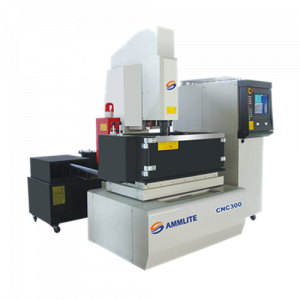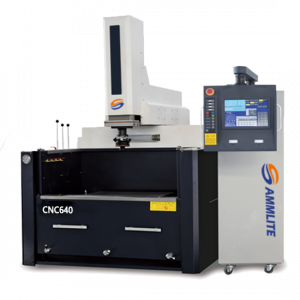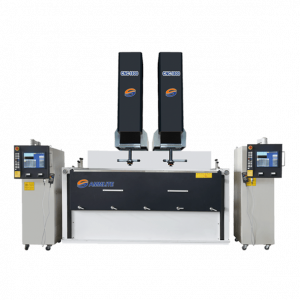How does electrode affect accuracy in EDM machine?
After the mold parts are processed, the measured dimensions of the processed parts are unqualified. The accuracy of the parts completed by EDM is usually about 0.005mm. The machining accuracy requirements of different parts in the mold parts are different, and the dimensional tolerance control of some parts with high accuracy requirements is very strict. If the machining dimension is not within the allowable tolerance range, it is an unqualified dimension. Unqualified dimensions are larger than the maximum limit size and smaller than the minimum limit size. The factors that affect the size of processing are as follows:
a. Effect of electrode size scaling amount.
There is a spark gap between the two poles during EDM. In order to process the required size, the electrode is scaled to an appropriate size for processing. The scaling size of the electrode is called the electrode scaling amount in production. During machining, the mismatch between the actual spark gap and the electrode scaling will directly affect the accuracy of machining dimensions. When the electrode translation machining is not used, if the generated spark gap is smaller than the electrode scaling amount, the machined size will be smaller than the standard value. Conversely, electrode scaling that is smaller than the actual spark gap will result in a larger-than-standard size after machining.
Therefore, the correct determination of the size of the electrode scaling amount is the premise of ensuring the qualified processing size. When determining the size of the electrode scaling, it should be reasonably selected according to the different processing parts. Plastic mold processing parts are generally divided into structural parts and molding parts. Structural parts play the role of matching and positioning in the mold. There are no strict requirements on the surface roughness of these parts, but the dimensions are required to be machined in place at one time to ensure that the dimensions after machining meet the requirements. When determining the size of the spark position of these parts, take the size of the spark gap actually generated during processing. The forming part is the part used to directly form the plastic part. The processing size and surface roughness of such parts have corresponding requirements.
The forming part of EDM is generally polished after the processing is completed to remove the fire pattern to meet the predetermined surface roughness requirements. Therefore, the polishing allowance should be accurately determined when determining the electrode scaling amount of this type of forming part.
Generally, the polishing allowance is about 4Ra+0.005mm (Ra: surface roughness value completed by EDM), and the sum of the actual spark gap and polishing allowance is taken when calculating the electrode scaling amount. The EDM process generally uses electrodes of different sizes to complete the machining from coarse to fine with different electrical standards. The size after machining is mainly determined by the control of finishing.
When the electrode translation machining is not used, the electrical parameter conditions to be selected to achieve the predetermined surface roughness should be considered when determining the size of the finishing spark position, and the size of the gap between the sparks under this condition should be clarified, and then the size of the electrode spark position should be determined. The spark position of the finishing part of the forming part is generally 0.04-0.08mm on one side, and the structure part is 0.02-0.06mm on one side. When determining the size of the roughing spark position, consider the processing speed and reserve an appropriate allowance for finishing as the standard, generally taking 0.15-0.25mm on one side. When using electrode translation processing, the spark position takes the standard value minus the spark gap and the amount of momentum. In the finishing process, the electrode spark position is generally about 0.12mm on one side. When determining the size of the electrode spark position, the machining performance of the machined part should also be considered in detail.
For example, when the slag discharge of through holes is good, it is not easy to form secondary discharge, and the spark gap generated is relatively small. However, because the slag discharge of blind holes is not very smooth, there are more opportunities for secondary discharge, and sparks are generated. The gap becomes larger. The large electrode scaling amount is smaller, and the electrode scaling amount is relatively small. Because the discharge energy is distributed evenly when the large electrode is discharged, the energy is concentrated when the small electrode is discharged.
b. The actual size of the electrode, the influence of translation control.
When the electrode translation processing is not used, the actual size of the electrode plays a decisive role in the completed size of the processing part. After the spark position of the electrode is correctly determined, a reasonable processing method should be used to ensure the accuracy of the electrode. When using electrode translation processing, the control of translation amount plays a decisive role in the processing size. The correct translation amount should be determined according to the measured size of the electrode to ensure that the processing size meets the requirements.



